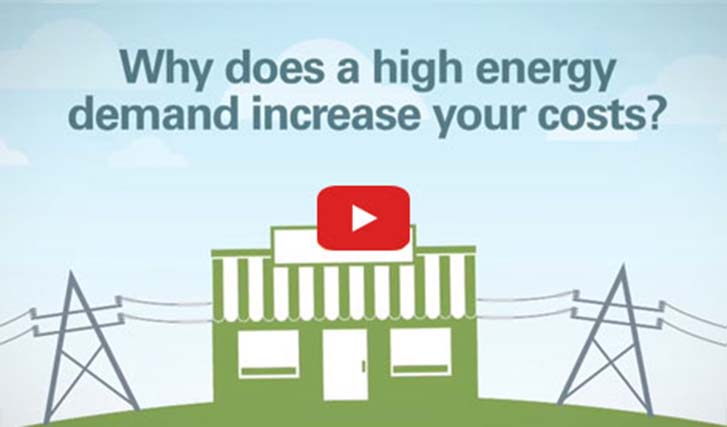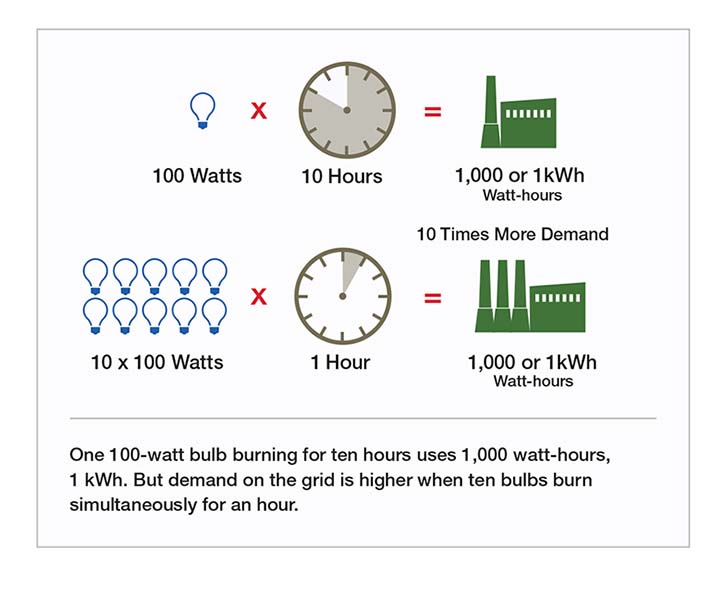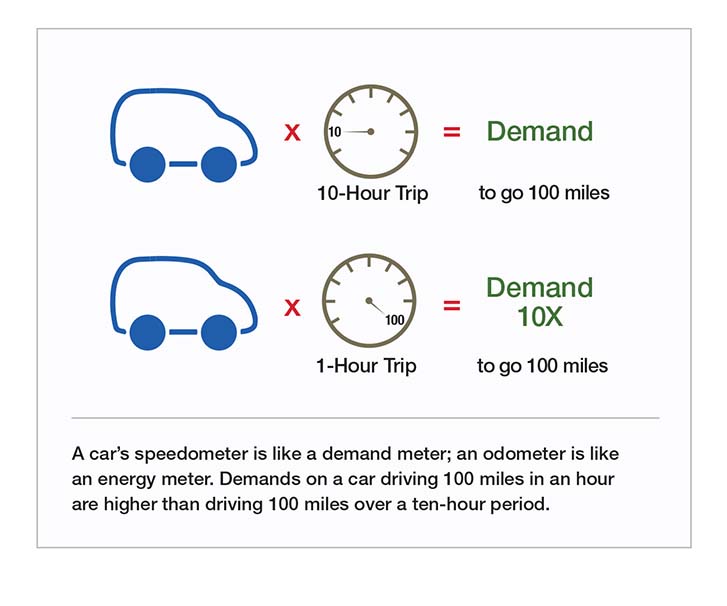
Understanding Time-Of-Use Charges

Components of your energy bill
How much energy you use (consumption) is not the only determination of how much you pay for electricity. In addition to Energy Charges, based on a cost per kilowatt-hour (kWh), a portion of your TOU bill may also be determined by Demand Charges, based on cost per kilowatts (kW).
On a mobile device? Watch the video.
The differences between demand and consumption are easy to understand.
The difference between demand (kW) and energy consumption (kWh) is vital to your choices in reducing your costs. A simple way to see the difference between demand and consumption is by considering these simple analogies:


In comparing both light bulb examples, if both of these customers were billed for their consumption only, both would receive the same bill for 1 kWh of energy. That is the way most residential customers are billed. In the second case, the utility has to have 10 times more generating “capacity” to provide that customer's brief high demand for power compared to the first case.
A customer who sets a high demand requires more services from us: additional generating plant capacity and more expense for lines, transformers, and substation equipment.
Demand Charges generally reflect our fixed costs (generation, transmission, and distribution) of providing a given level of power available to you, and Energy Charges (consumption) reflect the variable portion of those costs as you actually use that available power.
Depending on your rate option, you could see Facilities-Related Demand Charges and Time-Related Demand Charges on your bill.
- Facilities-Related Demand Charges apply at all times throughout the year, and are calculated per kilowatt (kW) according to your highest recorded demand during each billing cycle—no matter what season, day of week, or time of day.
- Time-Related Demand Charges only apply during the summer season (June 1 through September 30), when demand reaches its peak and costs are highest. Time-Related Demand Charges are assessed each month during On-Peak hours and also during Mid-Peak hours. These charges are in addition to and separate from a Facilities-Related Demand Charge.
| Rate Options for Business Customers | ||||
|---|---|---|---|---|
| Rate Option | Energy Demand | Time-Of-Use (TOU) Energy Charge | Facilities Related Demand Charge | Time-Related Demand Charge (TRD) |
| TOU-GS-1-A | 20kW or below | $ per kWh | N/A | N/A |
| TOU-GS-1-B | 20kW or below | $ per kWh | Year-round $ per maximum kW during the entire month |
June-September $ per kW during On-Peak and Mid-Peak |
| TOU-GS-2-A | Between 20kW and 200kW |
$ per kWh | Year-round $ per maximum kW during the entire month |
N/A |
| TOU-GS-2-B | Between 20kW and 200kW |
$ per kWh | Year-round $ per maximum kW during the entire month |
June-September $ per kW during On-Peak and Mid-Peak |
| Rate Options for Agricultural and Pumping Customers | ||||
|---|---|---|---|---|
| Rate Option | Energy Demand | Time-Of-Use (TOU) Energy Charge | Facilities Related Demand Charge | Time-Related Demand Charge (TRD) |
| TOU-PA-2A | Below 200kW | $ per kWh | Year-round $ per maximum kW during the entire month |
N/A |
| TOU-PA-2B | Below 200kW | $ per kWh | Year-round $ per maximum kW during the entire month |
June-September $ per kW during On-Peak and Mid-Peak |
